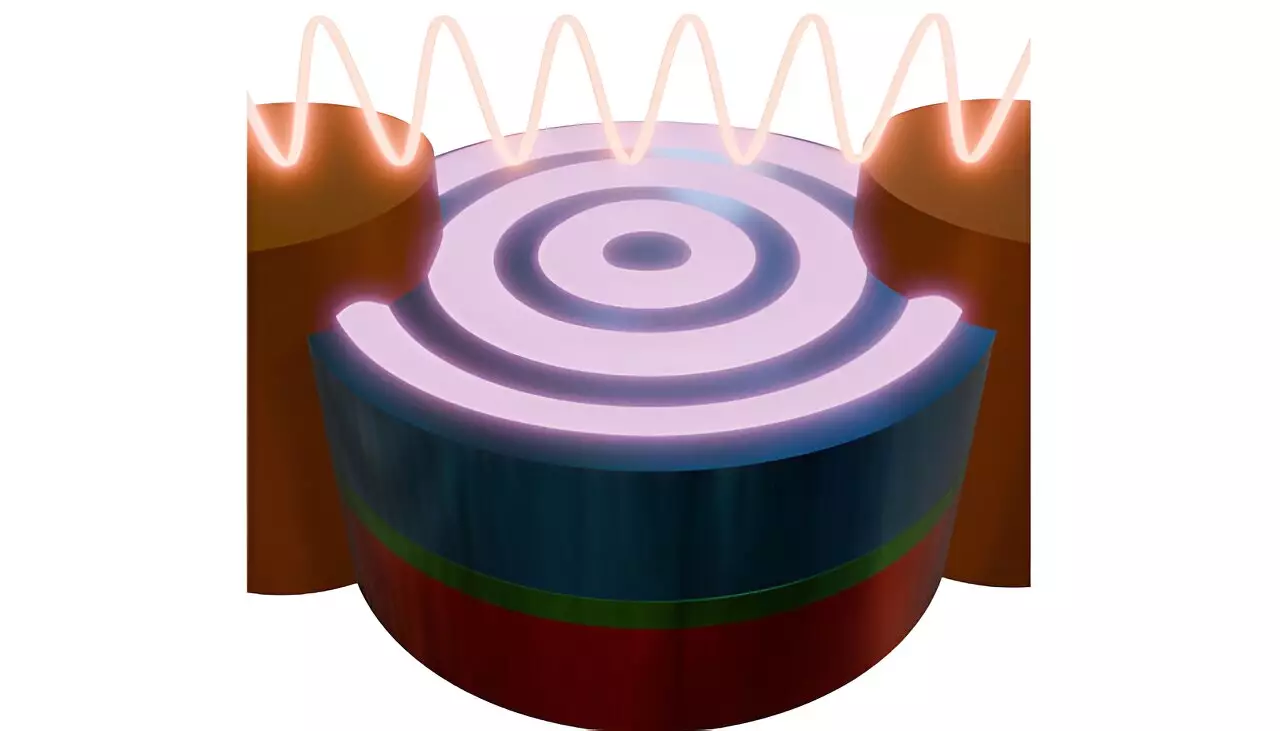In today’s technological landscape, the relentless demand for more compact and energy-efficient computing devices is becoming increasingly critical. As we rely more on laptops, smartphones, and tablets, the conventional CMOS (Complementary Metal-Oxide-Semiconductor) technology that powers these devices is reaching its limits. A recent collaborative study involving the University of Vienna and several prestigious research institutes in Germany has brought to light a groundbreaking development focused on magnonic circuits. This innovative approach utilizes spin waves to potentially overcome the inherent drawbacks of traditional computing architectures.
The current architecture in use incorporates billions of transistors, which, while effective, leads to mounting concerns about sustainability, power consumption, and energy losses. As devices shrink in size, the physical limitations of nanoscale transistors remain a significant barrier. This predicament urges scientists to explore alternative means of computation that can not only keep pace with technological advancements but also address energy efficiency.
Magnons, the quantum particles of spin waves, have surfaced as a promising alternative for future computing solutions. The metaphor of a stone creating ripples on a lake provides an excellent visual for understanding how spin waves function. When a disturbance is introduced in a magnetic medium—akin to dropping a stone into water—spin waves propagate outwards, carrying energy and information with minimal loss.
Dr. Sabri Koraltan, lead researcher on the study, likens the excitation of spin waves to this ripple effect, hypothesizing that these spin waves could be utilized to facilitate reliable data transmission within computing systems. However, a significant challenge that the researchers faced was generating short-wavelength spin waves, which are needed for efficient magnonic device operation. Their complexity often leads to inefficiencies in state-of-the-art nanofabrication processes.
In a pivotal development, the researchers proposed a simpler methodology for generating spin waves by employing a lateral alternating current through a specially designed magnetic stack. According to Dr. Sebastian Wintz, this discovery marks a paradigm shift, significantly increasing the efficiency of spin-wave generation compared to conventional techniques.
By utilizing synthetic ferrimagnetic systems that consist of layers with opposite magnetization patterns, the researchers were able to enhance the excitation of these magnetization patterns. The lateral alternating current created an efficient means of generating and directing spin waves, a capability that can vastly improve the operational performance of magnonic devices.
An impressive feature of this research was the team’s application of high-resolution ‘Maxymus’ X-ray microscopy, allowing them to observe the generated spin waves on a nanoscale. This capability provides an essential tool in validating their scientific hypotheses while demonstrating the potential for scalable computation using magnetism.
Furthermore, the development of specialized simulation software called magnum.np has facilitated large-scale simulations, which have been crucial in demystifying the mechanisms underlying spin-wave excitation. This advances our understanding of how we can control these waves dynamically, further enabling the design of active magnonic devices.
The implications of these findings are profound. The ability to control the direction of spin waves not only paves the way for reprogrammable magnonic circuits but could also revolutionize the way we think about adaptability in computing systems. The prospect of energy-efficient operations coupled with the flexibility of these devices offers a tantalizing glimpse into the future of technology.
The work presented by the researchers at the University of Vienna and their collaborators signals a notable evolution in the field of computational architecture. By harnessing the power of magnons and spin waves, they have opened up new pathways that could redefine energy efficiency in computing, pushing the limits of what is currently possible and setting the stage for next-generation technologies that align more closely with our sustainable development goals. The quest for energy-efficient computing moves forward, armed with innovative solutions like magnonic circuits.


Leave a Reply